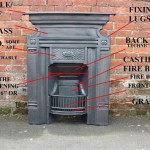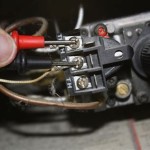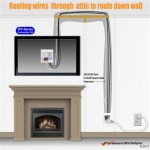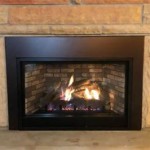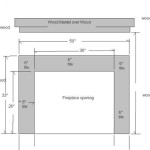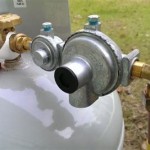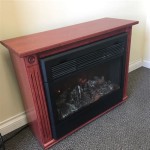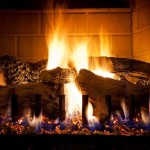How Much Does It Cost to Install a Fireplace?
Installing a fireplace can significantly enhance the ambiance and heating capabilities of a home. However, understanding the costs associated with this project is essential for proper budgeting and decision-making. The total expense can vary widely depending on several factors, including the type of fireplace, the materials used, the complexity of the installation, and the geographic location.
Typically, the cost to install a fireplace can range from a few thousand dollars to upwards of ten thousand dollars or more. This broad range reflects the diverse options available and the varying degrees of labor and materials required for each type. Breaking down the different types of fireplaces and their associated installation costs provides a clearer picture of the potential financial investment.
The following sections will explore the specific factors influencing the cost of fireplace installation, offering a comprehensive overview of the expenses involved.
Types of Fireplaces and Their Installation Costs
The type of fireplace chosen is perhaps the most significant factor influencing the overall installation cost. Fireplaces can be broadly categorized into wood-burning, gas, and electric models, each with distinct installation requirements and price points.
Wood-Burning Fireplaces: Wood-burning fireplaces are often considered the most traditional and can provide a nostalgic aesthetic appeal. However, they also tend to be the most expensive to install, particularly if a chimney needs to be constructed or an existing one requires significant repairs. Installation costs can frequently range from $3,000 to $10,000 or more, encompassing the fireplace unit itself, chimney construction or repair, firebox construction, and hearth installation. Furthermore, wood-burning fireplaces require careful adherence to building codes and safety regulations to ensure proper ventilation and reduce the risk of fire hazards. Ongoing costs include firewood purchase, chimney cleaning, and potential maintenance.
Gas Fireplaces: Gas fireplaces offer a convenient and relatively clean-burning alternative to wood. They can be fueled by natural gas or propane, depending on availability and homeowner preference. Installation costs for gas fireplaces typically range from $2,500 to $8,000. This includes the cost of the fireplace unit, gas line installation or extension, venting, and firebox construction. Gas line installation can vary significantly based on the distance from the existing gas source and any necessary trenching or permits. Installation requires a qualified gas fitter or plumber to ensure safe and compliant connections. Gas fireplaces often require annual maintenance and inspection to ensure safe operation.
Electric Fireplaces: Electric fireplaces are generally the least expensive option for installation, with costs ranging from $500 to $4,000. They require no venting or fuel lines, simplifying the installation process. Electric fireplaces can be plugged into a standard electrical outlet or hardwired for a more permanent installation. The cost variation depends primarily on the style and features of the fireplace, such as built-in mantels, realistic flame effects, and heating capacity. While installation is simpler, electricity costs need to be factored into the ongoing cost of operation. An electrician may be needed to install dedicated circuits or outlets depending on the fireplace model and existing electrical capacity.
Other Fireplace Types: Other options, such as pellet stoves and gel fireplaces, exist but are less common. Pellet stoves offer efficient heating using compressed wood pellets and can cost between $2,000 and $6,000 for installation, including the stove itself, venting, and pellet storage. Gel fireplaces use canisters of gel fuel to produce a flame and are typically portable and require minimal installation, usually costing between $100 and $1,000. However, the ongoing cost of gel fuel can be relatively high compared to other fuel sources.
Ultimately, the choice of fireplace type will significantly impact the total installation cost. Homeowners should carefully weigh the initial investment, ongoing operational costs, and aesthetic preferences when making their decision.
Factors Influencing Fireplace Installation Costs
Beyond the type of fireplace, several other factors can influence the overall cost of installation. These include the complexity of the project, the need for structural modifications, the materials used, and geographic location.
Complexity of Installation: The complexity of the installation is a major cost driver. Installing a fireplace in a newly constructed home is typically less expensive than adding one to an existing home. Retrofitting a fireplace often requires more extensive modifications to walls, flooring, and ceilings. Removing existing fireplaces or other structures can also add to the cost. Difficult access to the installation site can also increase labor costs. Projects involving custom designs or intricate masonry work will naturally command higher prices than standard installations.
Structural Modifications: Structural modifications are often necessary when installing a fireplace, especially in older homes. This might involve reinforcing walls to support the weight of the fireplace and chimney or creating new openings for venting. If structural engineers or architects are needed to assess and design these modifications, this will add to the overall expense. Existing chimney repairs or modifications can also fall under this category, potentially leading to significant cost increases if the chimney is found to be structurally unsound or outdated.
Materials Used: The cost of materials used can vary significantly depending on the type and quality chosen. For example, using natural stone for the fireplace surround and hearth will be more expensive than using brick or manufactured stone. The type of venting system used, whether it's stainless steel or galvanized steel, will also affect the cost. The choice of mantel material, ranging from inexpensive wood to custom-carved stone, will further contribute to the overall expense. The quality of the firebox and any additional features, such as remote controls or thermostat settings, also play a role in determining material costs.
Geographic Location: The cost of labor and materials can vary significantly depending on the geographic location. Areas with a higher cost of living typically have higher labor rates for contractors and tradespeople. The availability of specific materials and the distance they need to be transported can also impact material costs. Building codes and permit requirements can also vary by location, influencing the overall cost of the project. Obtaining quotes from multiple contractors in the specific area is essential to get an accurate understanding of the local market rates.
Permits and Inspections: Building permits are almost always required for fireplace installations to ensure compliance with local building codes and safety regulations. The cost of permits can vary depending on the municipality but typically ranges from a few hundred dollars to several hundred dollars. Inspections are also required at various stages of the installation process to ensure that the work is being done correctly and safely. Failure to obtain the necessary permits can result in fines and delays, so it is crucial to work with a contractor who is familiar with local building codes and permit requirements.
Budgeting and Cost-Saving Strategies
Appropriate budgeting and exploring cost-saving strategies can significantly impact the overall affordability of a fireplace installation project. Planning ahead and prioritizing essential features can help stay within the allocated budget.
Obtain Multiple Quotes: It is crucial to obtain multiple quotes from reputable contractors to compare pricing and services. Ensure that each quote includes a detailed breakdown of all costs, including labor, materials, permits, and any potential contingency expenses. Checking online reviews and verifying contractor licenses and insurance are essential steps in selecting a qualified and reliable professional.
Explore Financing Options: For larger projects, explore financing options such as home equity loans, personal loans, or contractor financing. Compare interest rates and repayment terms to find the most affordable option. Some contractors offer financing plans directly, which can simplify the process. However, always carefully review the terms and conditions of any financing agreement before committing.
Consider Off-Season Installation: Consider scheduling the installation during the off-season, such as spring or summer, when contractors may be less busy and more willing to offer discounts. Demand for fireplace installations typically peaks in the fall and winter months, so contractors may be more likely to negotiate prices during slower periods.
DIY Some Aspects (With Caution): Certain aspects of the project, such as demolition or cosmetic finishing, might be suitable for DIY if one possesses the necessary skills and experience. However, it is imperative to leave critical tasks like gas line installation, electrical wiring, and chimney construction to qualified professionals to ensure safety and compliance with building codes. Incorrect DIY work can lead to costly repairs and potentially dangerous situations.
Choose Cost-Effective Materials: Selecting cost-effective materials can significantly reduce the overall expense. Opting for manufactured stone instead of natural stone, using standard-size tiles instead of custom-cut tiles, and choosing stock mantels instead of custom-designed ones can all contribute to savings without significantly compromising the aesthetic appeal.
Energy Efficiency Considerations: While perhaps not directly a cost-saving strategy for the *installation* itself, choosing an energy-efficient fireplace can result in long-term savings on heating costs. Consider models with high energy efficiency ratings and features such as thermostats and programmable timers to optimize heating performance and reduce energy consumption. While the initial cost may be slightly higher, the long-term savings can offset the difference.
By carefully considering these budgeting and cost-saving strategies, homeowners can make informed decisions and manage the expenses associated with fireplace installation, ensuring that the project remains within their financial reach.

How Much Does It Cost To Install A Gas Fireplace Homeserve Usa

How Much Does It Cost To Put In A Fireplace Direct Fireplaces

How Much Does A Gas Fireplace Cost Fireplaces Direct Learning Center

How Much Does A Gas Fireplace Cost Fireplaces Direct Learning Center

Estimated Page Fireplaces Stoves Inserts Wood Gas Pellet

Estimated Page Fireplaces Stoves Inserts Wood Gas Pellet

Fireplace Installation Cost 2024 Gas Wood Burning Electric

How Much Does An Electric Fireplace Cost 2024 Data Angi

Gas Fireplace Insert Cost Forbes Home

How Much Does A Fireplace Remodel Cost 2024 Data Angi
Related Posts

